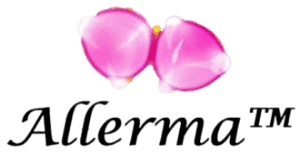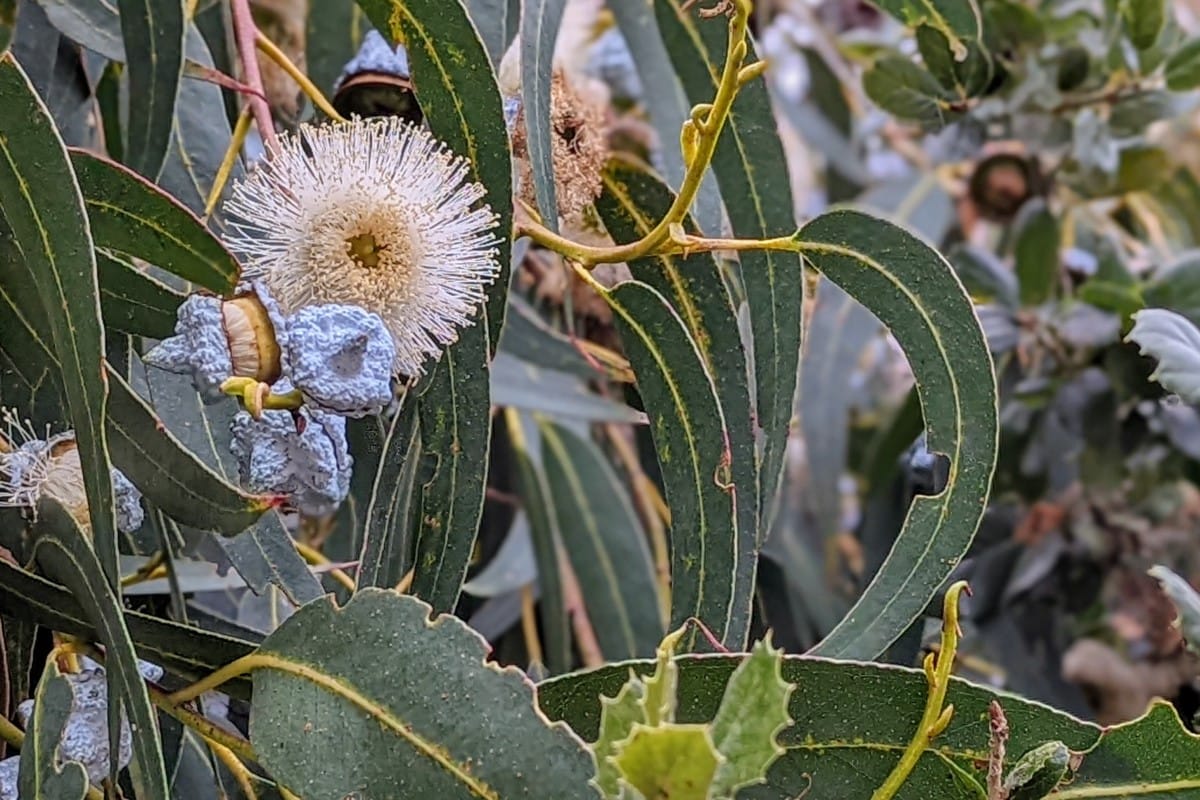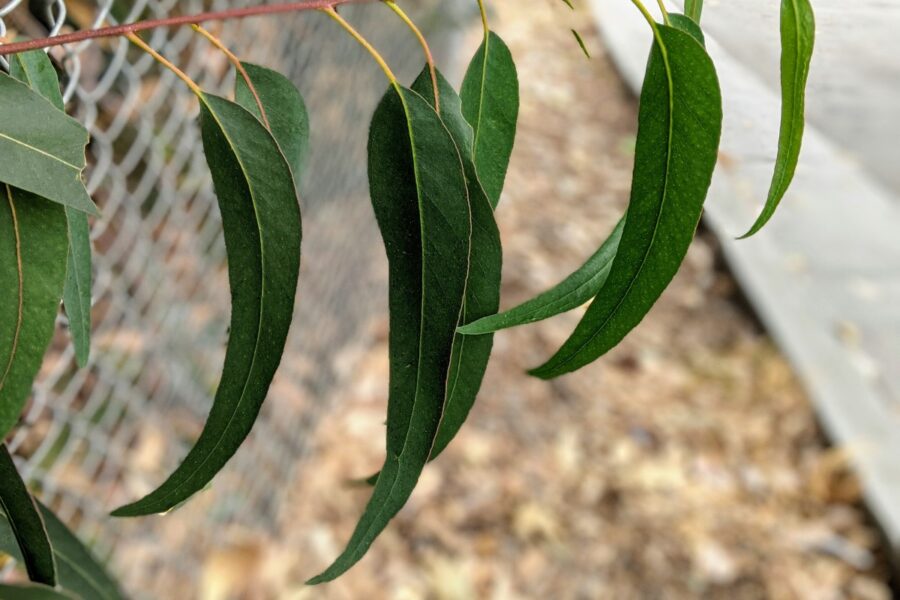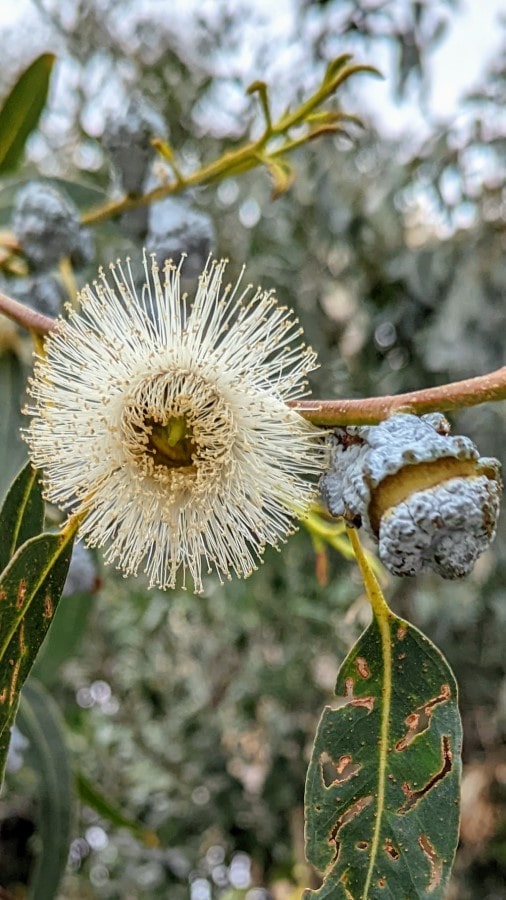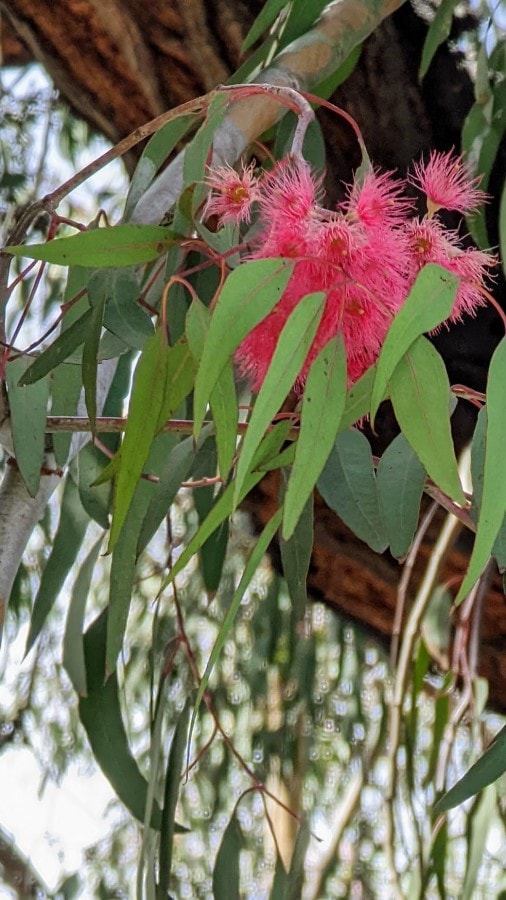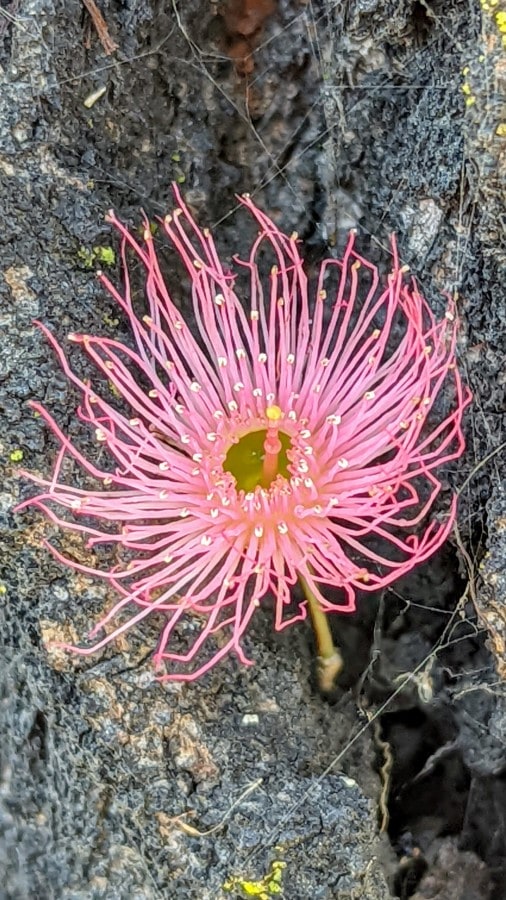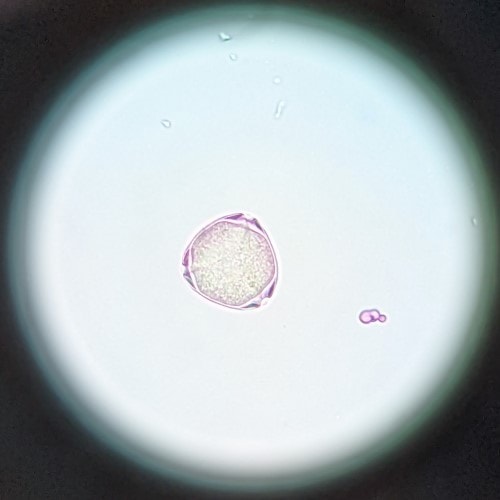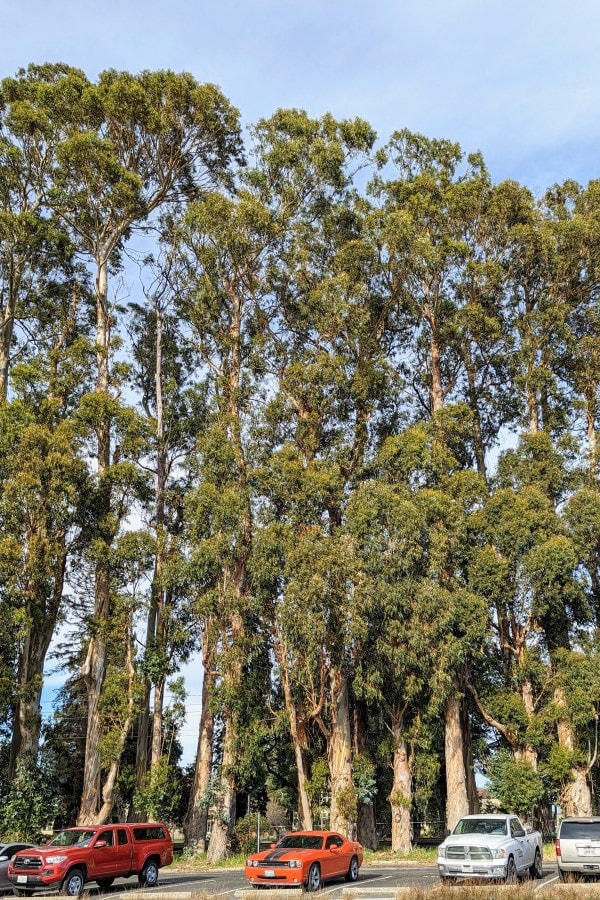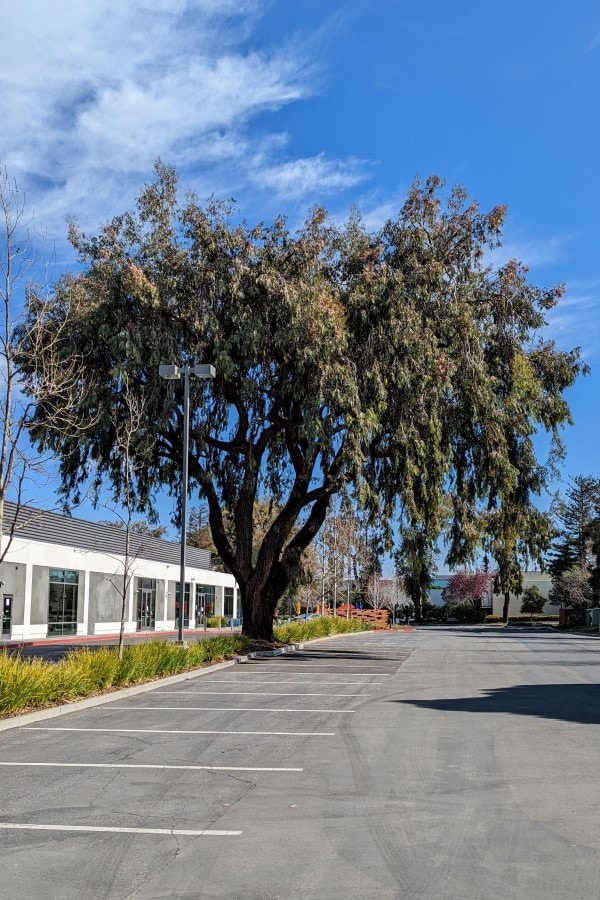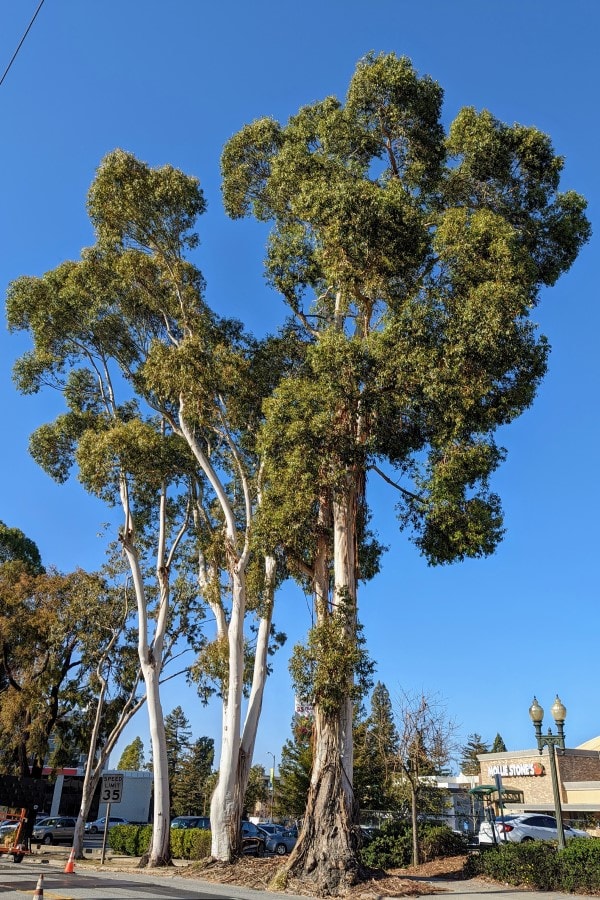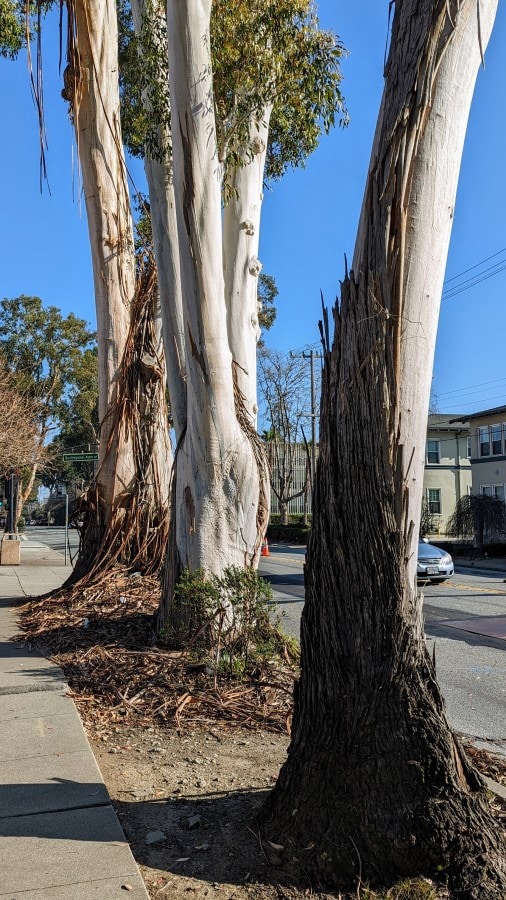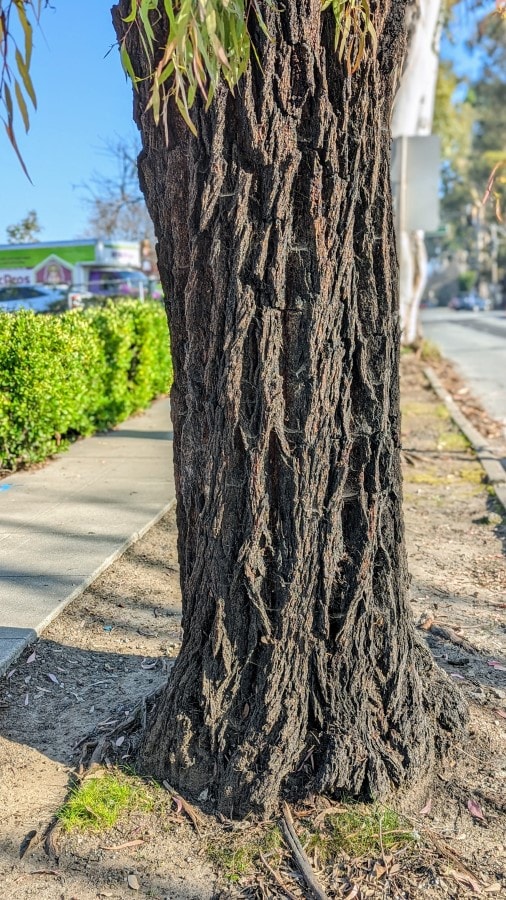In this article, with the help of photos, we will learn about eucalyptus allergies. Some species of eucalyptus are commonly called gum trees, for example, blue gum, silver gum, river red gum, etc.
These trees are insect-pollinated, as a result, their pollen does not become airborne easily. That said, we do catch very low counts of eucalyptus pollen during February and March. This is the time when the flowers start to dry out and pollen loses its stickiness. As a result, some pollen gets loose on windy days and reaches humans.
There are several species of eucalyptus present in the Bay Area. Almost all species are of large trees, some as tall as 80 feet.
| Eucalyptus | Pollen allergy profile |
|---|---|
| Pollen season | February, March, April |
| Pollination type | Insect-pollinated. The pollen only becomes airborne only in dry windy conditions. |
| Cross-reactivity to other pollen | Not known. |
| Pollen source | White, pink, or red flowers with brush-like stamens and no petals. |
| Gender | Monoecious: Flowers are “perfect” and have both male stamens and female pistils. |
| Tree size and shape | Generally large trees, canopy form varies among different species |
Leaves
Eucalyptus trees have simple leaves that are long and narrow. Technically speaking, the leaves are ovate or lanceolate. The leaves can be 4 to 10 inches long.
Flowers
The flowers of Eucalyptus are white, pink, or red in color. The flower lack petals and have several brush like male stamens. At the tip of each stamen is yellow pollen carrying anther.
A green, nozzel-like, female stigma is right at the center of the flower.
Pollen
The eucalyptus pollen size ranges from 25 microns to 30 microns. The pollen grain is almost triangular with three narrow furrows that meet at the poles. The trees are insect-pollinated and the eucalyptus pollen is a rare catch in our air sampling.
The trees generally bloom during winter. If you have allergies, you can look for flowers on the tree to assess the risk of allergies.
However, if you live in the San Francisco Bay Area, you have an easier way out! I do regular tree inspections and air sampling in the area to provide reliable pollen updates on our website
To see the pollen of other plants and trees, visit our pollen library.
Trees
Here are the examples of four different species of Eucalyptus all taken in Burlingame, California.
Trunk and bark
Most species of eucalyptus have a peeling bark with smooth white trunk underneath. Such barks are common among blue gum and manna gum trees.
Red ironbark tree on the other hand has dark brown and deeply ridged bark.
Eucalyptus tree allergy summary
Since eucalyptus trees are primarily insect-pollinated, they are not an important allergen. However, clinicians often have this pollen on the test panel. Acacia, is another insect-pollinated plant that produces pollen at the same time as Eucalyptus.
If you are among the few who have eucalyptus allergies, you have to take only precautions when their white or pink color flowers are in bloom during winter and spring. And, the risk of exposure is high only on dry windy days.
You can learn a lot more about pollen allergies and how to avoid them in my pollen allergy guide.
Sources
References
- Allergy Plants by Mary Jelks, M.D.
- Plant identification terminology by James G. Harris and Melinda Woolf Harris (Second Edition)
- Sampling and identifying pollens and Molds by E. Grant Smith
- The trees of golden gate park and San Francisco by Elizabeth McClintock PhD.
All pictures, unless otherwise credited to another source, are taken by the author and are copyrighted material. The pollen picture is taken in our aerobiology lab using an Olympus compound microscope. The use of pictures is permitted with a link back to the source page on the internet, or, an attribution to allerma.com on the printed material.
